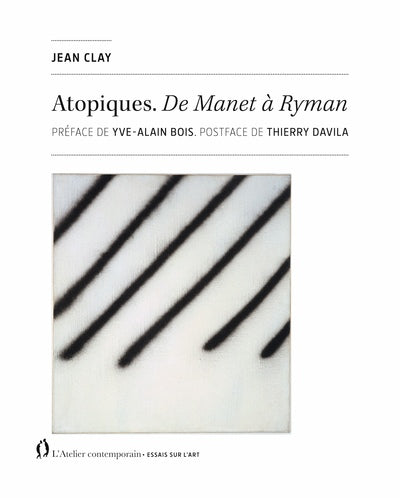Atopic
- Authors: By (author) Jean Clay, Preface by Yve-Alain Bois, Afterword by Thierry Davila, Interviewer Valérie Mavridorakis
- Publishers: WORKSHOP CONT
- Date of Publication: 2024-10-04
- Pages: 480
- Dimensions: 205mm x 166mm
"Anonymity is a fight" said Jean Clay. A claimed discretion hovers
on the existence and work of the man who founded the prestigious publishing house
Macula in 1980. Atopiques brings together his most important writings on art,
published in particular in the magazines Robho and Macula which he founded with passion
scholar, over the years 1960 to 1980. Contributions from historians of
art Yve-Alain Bois and Thierry Davila shed light on its theoretical scope and
historical. Journalist and critic, worked for Le Monde then for Réalités, but
Also an art historian and editor, Jean Clay was driven by a constant
aesthetic and political will to “multiply the instruments of
expression”, in other words, to materially invent one’s own modes
of expression. Thus his writings on art collected here are inseparable
of the two great editorial adventures that he initiated, with the Robho magazine
1967 to 1971, then with the magazine Macula from 1976 to 1979. Faithful to this history,
Atopics is divided into two main parts. The first gives us a chance to read his writings
Robho years, when he hosted this magazine founded with the poet Julien
Blaine, which aimed to bring social and political institutions into crisis,
notably literary and museum. While the second part gives to read its
writings of the Macula years, during which he devoted himself, with the historian of
art Yve-Alain Bois, to this new review which aimed for itself more
particularly to put into crisis the institution of the painting itself, of the painting
as a form crystallizing various aesthetic and political issues. In a
interview with Thierry Davila and Valérie Mavridorakis, Jean Clay talks about
other than the creation of the Macula magazine and the editions of the same name, in a
"intellectually overexciting" atmosphere, that of the 1970s and 1980s,
time when the thoughts of Walter Benjamin were spreading, which we discovered in
translations of Jean Lacoste, Michel Foucault, Jacques Derrida, Tzvetan
Todorov, Roland Barthes, Hubert Damisch, Georges Didi-Huberman, or Rosalind
Krauss… Recalling his career, Jean Clay evokes the day when Yve-Alain Bois
invited him to have a beer at Michel Foucault's, or the day when, listening
Georges-Didi Huberman talking about his thesis on the photographic iconography of the
Salpêtrière in Hubert Damisch's seminar at the School for Advanced Studies in
social sciences, he had the idea of making a book about it. In the writings he
devotes himself to the art he loves – “optical art, the art of movement,
art-event, art-environment, invisible art, multiple art,
"collective art" - he uses, as Thierry Davila notes, "a whole
renewed, enriched, worked and extended vocabulary of description”, which
serves "a careful and acute observation of concrete singularities
"workers". These singularities, towards which Jean Clay directs our
Attention, these are the artists Josef Albers, Martin Barré, Lygia Clark, Hans
Haacke, Richard Paul Lohse, Édouard Manet, Rafael Martinez, Jackson Pollock,
Robert Ryman, Jesús-Rafael Soto, Takis or Georges Vantongerloo.
Share

